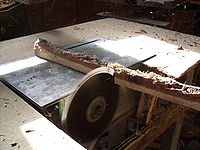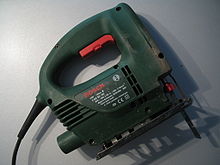I'm in the market for a saw. There's just so much wood in my garage and so many projects I'd love to get started on...if only I had a saw. But what kind of saw should I get? There's the miter saw:
Common uses include framing operations and the cutting of molding. Most miter saws are relatively small and portableWhile most miter saws enable precise one-degree incremental changes to the miter index, many also provide "stops" that allow the miter index to be quickly set to common angles (such as 15°, 30°, 45°).
There are four general classes of table saws. Great for straight cuts and handles large pieces of wood.





1 comments:
If you're right handed, a worm drive saw can make straight cuts in sheet wood, and mitered cuts in dimensional boards. You don't get the benefit of the stops like with a miter saw, but you also don't have the width limitation that a miter saw has. (over 8 inches wide doesn't cut in one pass) It's usually a little heavy, but I bought one and have barely used my table saw or miter saw since. A band saw, scroll saw or jig saw is needed for any curved cuts. I have a band saw but usually use my jig saw. A more powerful jig saw is worth a bit of extra money. The cuts look much better. Once you get your saws. . .you'll need a sander (or two).
Will you link to chocolatecreamcenters.blogspot.com? I'm an author and post new short stories every Saturday.
Post a Comment